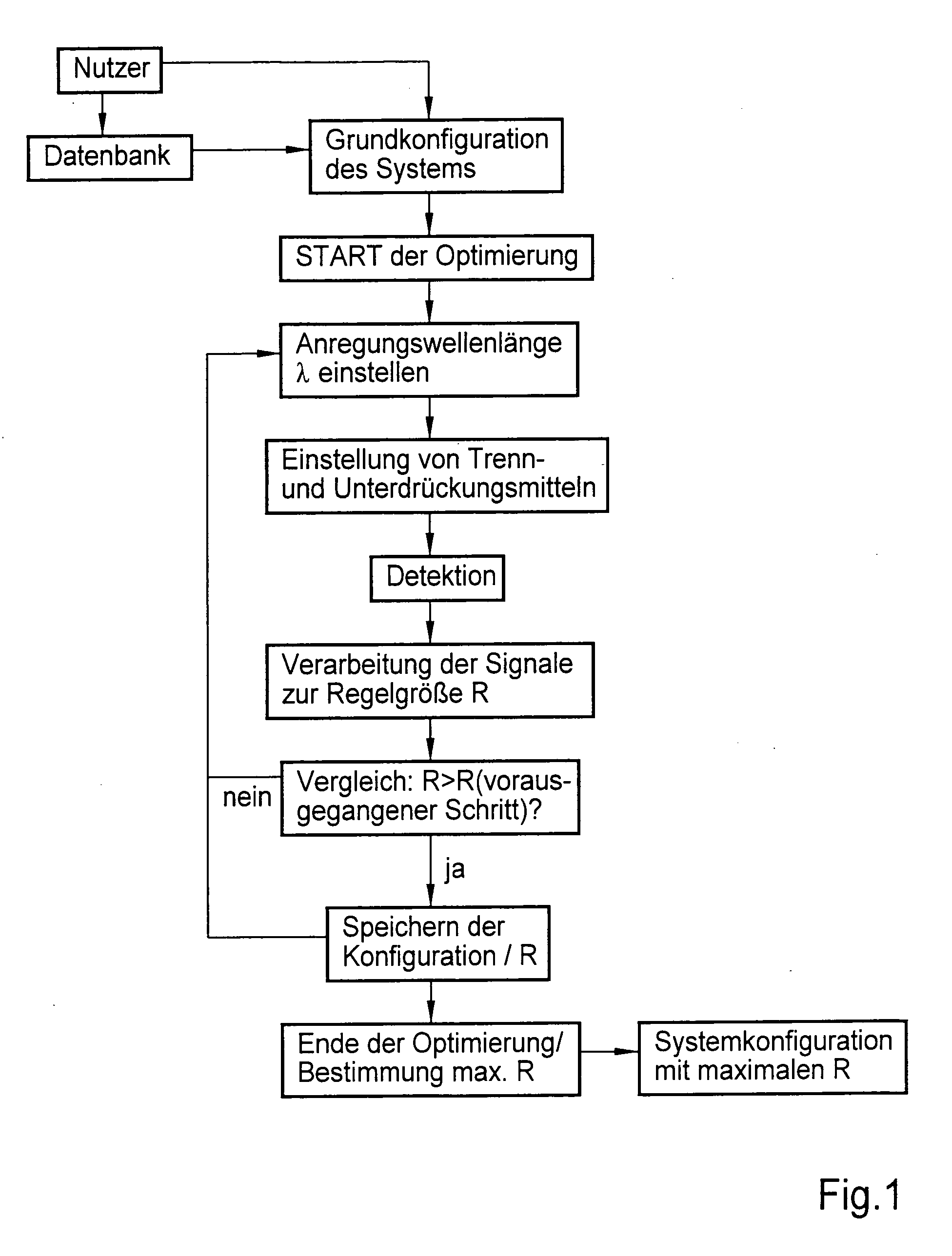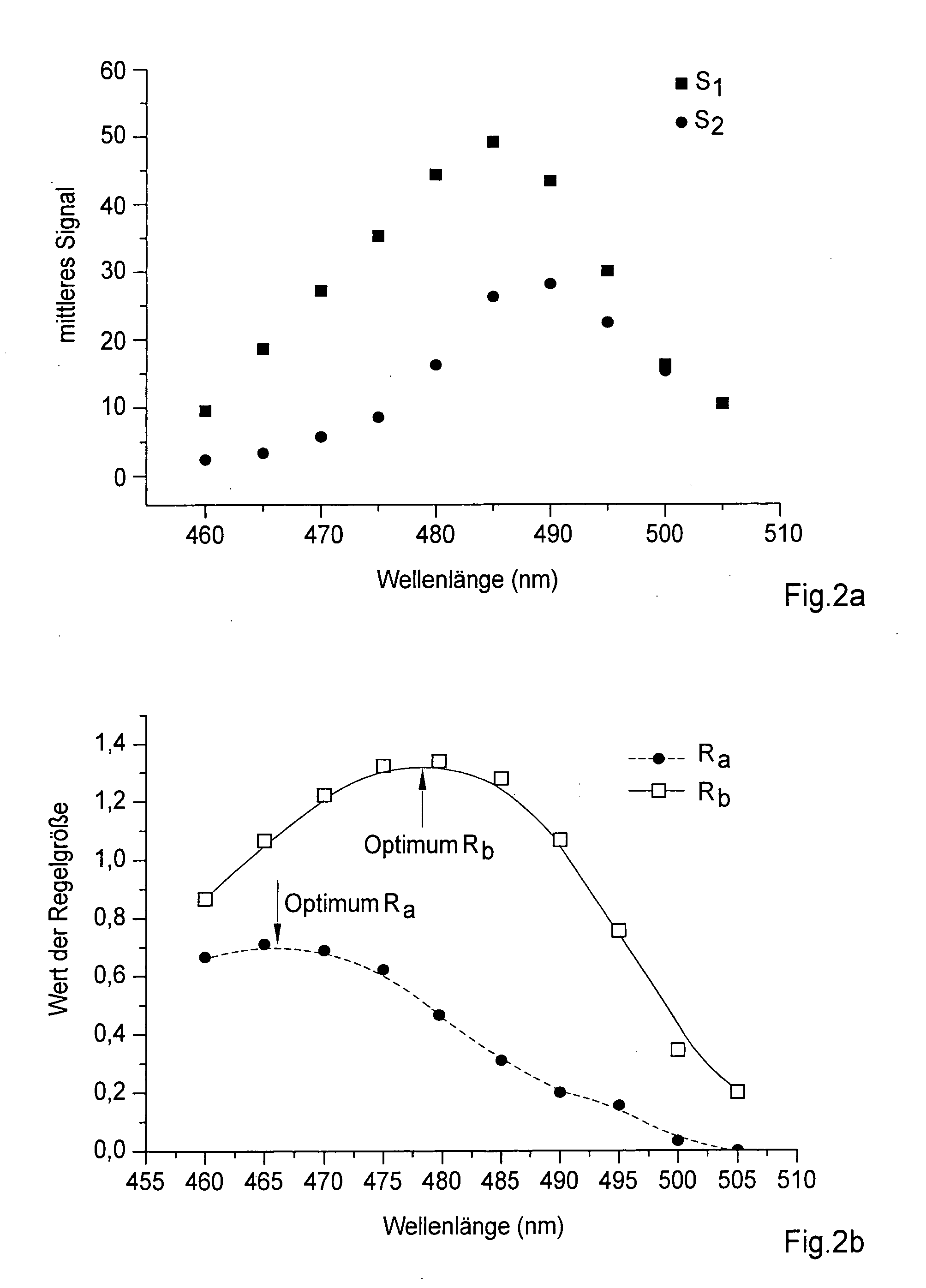Method and apparatus for the examination of probes
a probe and apparatus technology, applied in the field of methods and apparatus for the examination of probes, can solve the problems of failure of the method, inconvenient type of aobs, and the detection beam path, and achieve the effect of efficiently separating excitation light and emission light, and influencing the polarization of ligh
- Summary
- Abstract
- Description
- Claims
- Application Information
AI Technical Summary
Benefits of technology
Problems solved by technology
Method used
Image
Examples
Embodiment Construction
[0060] In describing preferred embodiments of the present invention illustrated in the drawings, specific terminology is employed for the sake of clarity. However, the invention is not intended to be limited to the specific terminology so selected, and it is to be understood that each specific element includes all technical equivalents that operate in a similar manner to accomplish a similar purpose.
[0061]FIG. 1 shows the procedural sequence of the method for the optimization of the excitation wavelengths for a fixed detection wavelength range. The user can do the basic configuration of the system for the start of the optimization himself or use the emission and detection spectra stored in the database by entering the dyes present in the probe. In the latter case, the basic configuration of the system takes place automatically on the basis of the information in the database. The other optimization parameters, such as the step lengths, excitation and detection bands are set up autom...
PUM
 Login to View More
Login to View More Abstract
Description
Claims
Application Information
 Login to View More
Login to View More - R&D
- Intellectual Property
- Life Sciences
- Materials
- Tech Scout
- Unparalleled Data Quality
- Higher Quality Content
- 60% Fewer Hallucinations
Browse by: Latest US Patents, China's latest patents, Technical Efficacy Thesaurus, Application Domain, Technology Topic, Popular Technical Reports.
© 2025 PatSnap. All rights reserved.Legal|Privacy policy|Modern Slavery Act Transparency Statement|Sitemap|About US| Contact US: help@patsnap.com



